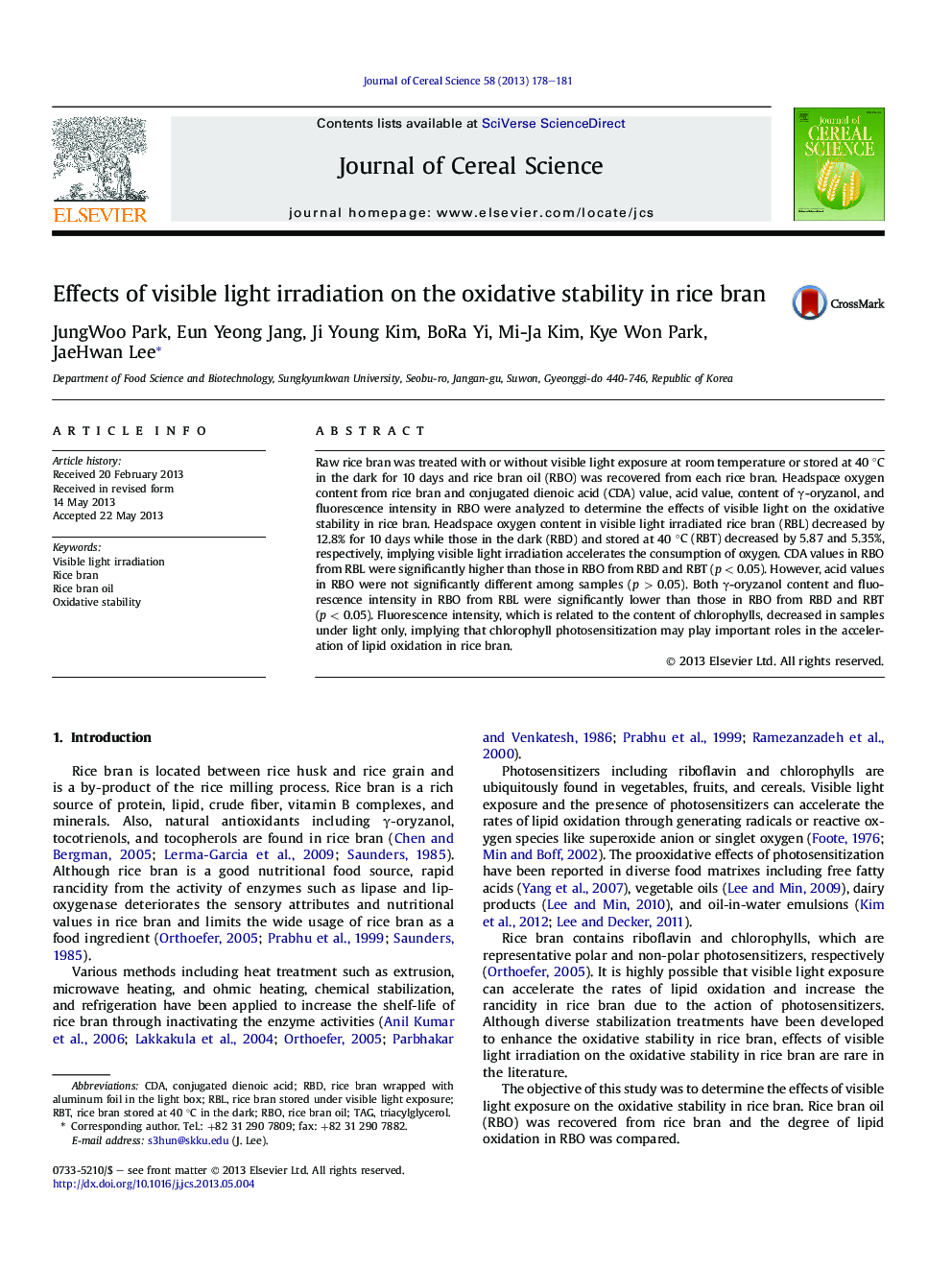| Article ID | Journal | Published Year | Pages | File Type |
|---|---|---|---|---|
| 4515895 | Journal of Cereal Science | 2013 | 4 Pages |
•Visible light exposure significantly deteriorates the oxidative stability in rice bran.•Photosensitizers like chlorophylls in rice bran may be major driving forces for the oxidation.•Acid values in rice bran oils were not different during visible light irradiation.•Rice bran should be stored in the dark due to the presence of photosensitization.
Raw rice bran was treated with or without visible light exposure at room temperature or stored at 40 °C in the dark for 10 days and rice bran oil (RBO) was recovered from each rice bran. Headspace oxygen content from rice bran and conjugated dienoic acid (CDA) value, acid value, content of γ-oryzanol, and fluorescence intensity in RBO were analyzed to determine the effects of visible light on the oxidative stability in rice bran. Headspace oxygen content in visible light irradiated rice bran (RBL) decreased by 12.8% for 10 days while those in the dark (RBD) and stored at 40 °C (RBT) decreased by 5.87 and 5.35%, respectively, implying visible light irradiation accelerates the consumption of oxygen. CDA values in RBO from RBL were significantly higher than those in RBO from RBD and RBT (p < 0.05). However, acid values in RBO were not significantly different among samples (p > 0.05). Both γ-oryzanol content and fluorescence intensity in RBO from RBL were significantly lower than those in RBO from RBD and RBT (p < 0.05). Fluorescence intensity, which is related to the content of chlorophylls, decreased in samples under light only, implying that chlorophyll photosensitization may play important roles in the acceleration of lipid oxidation in rice bran.
